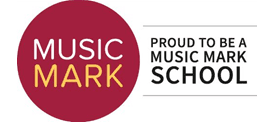Phonics

Read Write Inc
Read Write Inc – Our Phonics Scheme
The Government strongly recommend the use of synthetic phonics when teaching early literacy skills to children. Synthetic phonics is simply the ability to convert a letter or letter group into sounds that are then blended together into a word.
Here at Saint Mary’s Catholic Primary Academy, we are embarking on our journey of using Ruth Miskin’s Read Write Inc (RWI) programme to get children off to a flying start with their English. The children will be assessed regularly and grouped according to their ability. They will work with a RWI trained teacher or teaching assistant.
When using RWI to read the children will:
- Learn 44 sounds and the corresponding letter/letter groups using simple prompts
- Learn to read words using sound blending (Fred talk)
- Read lively stories featuring words they have learnt to sound out
- Show that they comprehend the stories by answering ‘Find It’ and ‘Prove It’
When using RWI to read the children will:
- Learn 44 sounds and the corresponding letter/letter groups using simple prompts
- Learn to read words using sound blending (Fred talk)
- Read lively stories featuring words they have learnt to sound out
- Show that they comprehend the stories by answering ‘Find It’ and ‘Prove It’
When using RWI to write the children will:
- Learn to write the letter/letter groups which represent the 44 sounds
- Learn to write words by saying the sounds and graphemes (Fred fingers)
When using RWI the children will also work in pairs:
- To answer questions
- To take turns talking and listening to each other
- To give positive praise to each other

Help your child learn to read words by sounding-blending (Fred talk) eg. d-o-g = dog , sh-o-p = shop. Children learn to read words by blending the letter-sounds that are in the Speed Sounds set
Help your child to say the pure sounds (‘m’ not ‘muh’, ‘s’ not ‘suh’ etc.) as quickly as they can, and then blend the sounds together to say the whole word.
Set 1 Green Words:
Set 2 Green Words:
2.1, 2.2, 2.3, 2.4 Green Words
2.5, 2.6, 2.7, 2.8 Green Words
2.9, 2.10, 2.11, 2.12 Green Words
Set 3 Green Words:
3.1, 3.2, 3.3, 3.4, 3.5 Green Words
3.6, 3.7, 3.8, 3.8. 3.9, 3.10 Green Words
Read Write Inc Books
Please encourage your child to read though the speed sounds page first, then the green and red words page and then check your child understands the meaning of words on the vocabulary check page, before they start reading the book. Your child will have read this book at least three times before they bring it home. They should be able to read this book with fluency and expression by the time they bring it home and they should have a good comprehension of what the book is about. At the back of the book are find it/prove it questions for you to do with your child.
Take a look at the videos to see how you can help your child with their pure sound and visit the RWI website for more information.
Phonics Screening Homework Book
Teach your child phonics at home with these supporting QR codes containing teaching videos for Set 2 ay, ee, igh, ow, oo, oo, ar, or, air, ir, ou, oy
Set 2 QR Codes
Teach your child phonics at home with these supporting QR codes containing teaching videos for Set 3 ea, oi, a-e, i-e, o-e, u-e, aw, are, ur, er, ow, ai, oa, ew, ire, ear, ure
Set 3 QR Codes
In Nursery children begin their phonics journey by working through the stages of phonological awareness. They work through structured activities and materials that are used to teach early phonological awareness skills, paving the way for the systematic teaching of phonics, Read Write Inc. (RWI) later on in the year. We focus on:
- general sound discrimination
- environmental sounds
- instrumental sounds
- body percussion
- rhythm and rhyme
- voice sounds
- alliteration
- finally, oral blending and segmenting
After covering all these areas, most children will begin learning their set one sounds.
Useful websites for Parents
Please find a list of websites that you may find useful in helping you and your child learn about phonics. Games and fun activity websites are also included.
http://jollylearning.co.uk – Games and information for parents
http://www.phonicsplay.co.uk – many games to play
http://www.bbc.co.uk/bitesize/ks1/literacy/phonics/play – fun games for the children to play
http://www.ictgames.com/literacy.html fun games for the children to play
http://www.kenttrustweb.org.uk/kentict/kentict_home.cfm – fun games for the children to play and information for parents
http://www.ngfl-cymru.org.uk – fun games for the children to play
http://www.starfall.com – fun games for the children to play
http://www.firstschoolyears.com – fun games for the children to play
Sparklebox – lots of resources to print off and help you support your child at home
BBC Bitesize – many games to play covering all areas of the curriculum
Grammar, Punctuation and Spelling
Spelling is a huge part of writing and all year groups access spelling programmes to help consistently improve the standard of spelling across the school.
In EYFS and Key Stage 1, we use the RWI approach to teach phonics, and specific spelling patterns and words are taught in KS2. We pride ourselves in having spellings and handwriting as ‘non-negotiables’ across all subjects – not just English – so the children are applying spelling strategies across all subject areas.
For children not doing RWI, spellings are sent home each week and the children have a quiz on a Friday. Through the week, spellings are taught in class, using the LOOK SAY COVER WRITE CHECK approach, along with other strategies and multi-sensory activities.











